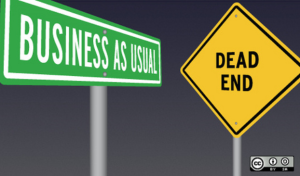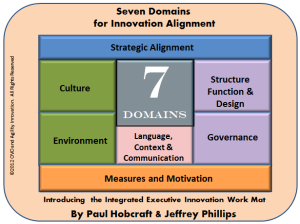The three horizons offer us much to frame our innovating future
 Following a couple of recent posts on reflecting on the three horizons methodology, firstly here and then here, I wanted to come back to where I see real value, in managing your innovating future.
Following a couple of recent posts on reflecting on the three horizons methodology, firstly here and then here, I wanted to come back to where I see real value, in managing your innovating future.
The 3H methodology enables us to look out into the future, across three different horizons that can manage the transition between the short, medium and long term in our innovation activities, something often badly lacking in most organizations’ thinking.
It allows us to gauge the challenges, adding aspects we are beginning to gain a sense of, transitioning from one position to another. It allows us to deepen our evaluation of the innovation portfolio of activities, resources and skillsets across different delivery frames of the short, medium and longer term.



